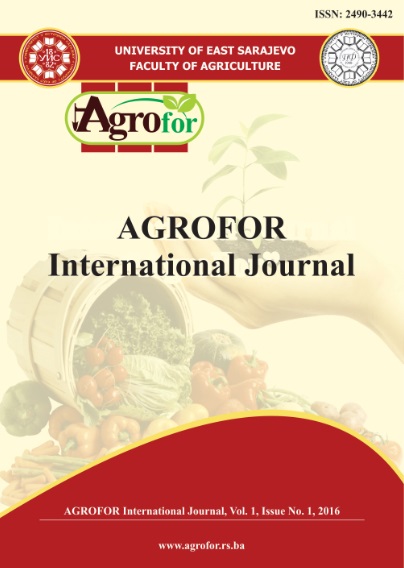TOWARDS A NEW CONCEPT FOR THE AGRICULTURAL LAND-USE PLANNING IN THE NEW SOCIO-ECONOMIC CONDITIONS IN BULGARIA
DOI:
https://doi.org/10.7251/AGRENG1601076MAbstract
The goal of this paper is to present a new concept for Agricultural Land-Use
Planning as a land-administration activity in today’s market economy. The
planning process consists of preparing projects for land use in the agricultural
territories. Agricultural Land-Use Planning is developed for the purpose of
materializing and stabilizing land tenure, for environmental protection and for
ensuring efficient farm economy. The current market economy conditions are new
to the country. So far, land management has served the principles of the centralized
planned economy under the totalitarian governance of the land. The main
deficiencies of that governance are connected with the alienation of land owners
from their properties and the liquidation of their interest in land stewardship.
Another problem has been the occurrence of soil degradation processes as a
consequence of extreme soil exhaustion. The cooperative land cultivation in the
past prevented land-use planning from addressing the issues of land tenure.
The socio-economic conditions of today’s market economy pose new challenges to
the Agricultural Land-Use Planning due to differing and compliance the interests in
the public and private sectors. The strategy has to be constructed in such a way that
it simultaneously secures land-tenure, environmental protection, and the farms’
economic prosperity. This brings together a number of activities such as research
and assessment of soil quality, agricultural cadaster, appraisal of land property, soil
protection and soil fertility, environmental and landscapes protection, agricultural
land structure design, etc. Based on a survey conducted among professionals and
farmers, and on the authors’ critical approach, a new concept for the Agricultural
Land-Use Planning as a socio-economic activity has been developed. A number of
design activities in the dynamic market environment are included, as well. The
paper is written in the form of a comparison between the two socio-economic
systems (centrally planned land-use and cooperative land cultivation systems) and
contains the main highlights of the new concept.

